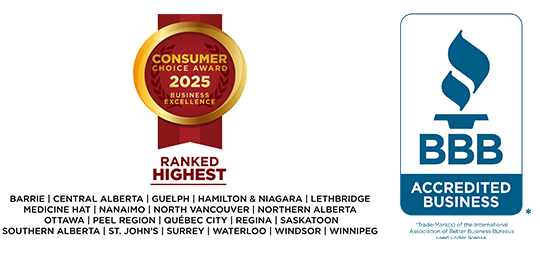Two-thirds of British Columbians (67%, +2 pts) say they desperately need interest rates to go down despite two consecutive interest rate pauses, according to the latest MNP Consumer Debt Index. British Columbians are more likely than those in any other province (58%) this quarter to say they are concerned about their ability to repay their debts, even if interest rates decline. This marks a 14-point increase since the previous quarter, reaching the highest level on record since tracking began in 2017. British Columbians are more likely than those in any other province to say they are concerned rising interest rates could drive them toward Bankruptcy (55%), jumping a significant 19 points since last quarter to reach an all-time high.
“British Columbians are facing a unique convergence of financial pressures, compounded by broader economic uncertainty and global volatility,” says Linda Paul, a Licensed Insolvency Trustee with MNP LTD in the Lower Mainland. “Many in the province are feeling the strain more acutely with the highest housing costs in the country and inflation running above average — and the pause after consistent interest rate cuts may be compounding that anxiety.”
More than half of British Columbians (53%) now say they regret the amount of debt they have taken on — jumping a significant 13 points since last quarter and reaching the highest level among the provinces. More than half (52%) are concerned about their current debt level, up 12 points, as the cost of living and ongoing economic uncertainty weigh on households.
“The sharp rise in debt regret and concern this quarter signals that financial strain is intensifying for many British Columbians,” says Paul. “Many are now feeling the emotional weight of their debt after years of coping with rising costs, high interest rates, and depleted savings — and are growing anxious about what’s still ahead.”
Uncertainty and the cost of living are translating into day-to-day financial strain. British Columbians are more likely than those in any other province (31%) to say they feel stalled, having to put their lives on hold. More than a third (37%) report feeling anxious or stressed about their financial situation. A third of British Columbians (33%) report feeling stuck living paycheque to paycheque, while an equal share (33%) say they are feeling more cautious with how they manage their money due to current financial pressures. A quarter (26%) feel they are constantly putting out financial fires as they face one unexpected cost after another.
“The financial pressure hasn’t let up, despite two interest rate pauses,” says Paul. “Many are treading carefully as the high cost of living continues to squeeze budgets, but still feel like they’re falling behind or constantly putting out financial fires.”
Around a third of British Columbians have reduced discretionary spending (36%) or are increasing savings or building emergency funds (34%) in response to current financial pressures. About a quarter are putting off important life goals, such as buying a home, starting a family, or changing careers (26%), or are prioritizing debt repayment (23%).
There are signs that some British Columbians are beginning to regain some sense of financial control amid economic uncertainty. The average amount households have left at the end of the month has increased to $890, up $90 from last quarter. This potentially signals that more British Columbians are building a modest financial buffer in case of further economic disruption.
“Some households appear to be gaining a small bit of breathing room, although broader financial challenges persist,” says Paul. “Even modest improvements can be meaningful in today’s environment.”
While more British Columbians rate their debt situation as excellent (33%, -4 pts) than terrible (19%, -1 pt), the four-point decline suggests some softening in overall optimism since last quarter.
More than a quarter of British Columbians (28%, +3 pts) expect their debt situation to improve one year from now, and a larger proportion (36%, unchanged) believe it will improve in five years. However, more than one in 10 (Significantly fewer this quarter believe they will be able to cover all living expenses in the next year without taking on more debt (48%), dropping a substantial 10 points since last quarter.
While some households are managing to set a little more aside, a significant proportion of British Columbians remain on precarious financial footing.
“Nearly 2.2 million British Columbians say they are teetering on the edge of insolvency, with almost no buffer to handle unexpected expenses or changes in income,” says Paul.
Nearly half of British Columbians (46%, -2 pts) say they are $200 or less away from financial insolvency each month. This includes more than a third (35%, +5 pts) who say they are financially insolvent.
Paul urges those feeling overwhelmed by debt or financial pressure to speak with a Licensed Insolvency Trustee. Licensed Insolvency Trustees can provide unbiased advice on the full range of debt relief options available and administer personalized solutions to help individuals regain control of their finances.
“Whether you’re behind on payments, receiving collection calls, or simply unsure what to do next, a Licensed Insolvency Trustee can help you find some clarity,” says Paul. “These professionals can walk you through all of your options and offer non-judgmental advice tailored to your unique situation.”
Paul says it’s a sure sign it’s time to ask for help if financial stress is causing sleepless nights. “You’re not alone — many British Columbians are feeling overwhelmed right now. Even taking that first step to understand your options can be a huge relief. Getting advice early often makes the path forward much clearer and easier to manage.”
MNP’s national team of Licensed Insolvency Trustees offers free consultations across the country to help severely indebted Canadians get unbiased debt advice, understand their rights, and determine the best path forward. Licensed Insolvency Trustees are the only federally regulated debt professionals who can assist with all the debt relief options, including Consumer Proposals and Bankruptcy, stop harassment from debt collectors, and discharge people from debt.
About MNP LTD
MNP LTD, a division of the national accounting firm MNP LLP, is the largest insolvency practice in Canada. For more than 50 years, our experienced team of Licensed Insolvency Trustees and advisors have been working with individuals to help them recover from times of financial distress and regain control of their finances. With more than 240 offices from coast to coast, MNP helps thousands of Canadians each year who are struggling with an overwhelming amount of debt. Visit MNPdebt.ca to contact a Licensed Insolvency Trustee or use our free Do-it-Yourself (DIY) debt assessment tools. For regular, bite-sized insights about debt and personal finances, subscribe to the MNP 3-Minute Debt Break Podcast.
About the MNP Consumer Debt Index
The MNP Consumer Debt Index measures Canadians’ attitudes toward their consumer debt and gauges their ability to pay their bills, endure unexpected expenses, and absorb interest-rate fluctuations without approaching insolvency. Conducted by Ipsos and updated quarterly, the Index is an industry-leading barometer of financial pressure or relief among Canadians.
Now in its thirty-third wave, the Index has held firm at 88 points – the same level as last quarter. Visit MNPdebt.ca/CDI to learn more.
The data was compiled by Ipsos on behalf of MNP LTD between June 9 and June 13, 2025. For this survey, a sample of 2,000 Canadians aged 18 years and over was interviewed. Weighting was then employed to balance demographics to ensure that the sample's composition reflects that of the adult population according to Census data and to provide results intended to approximate the sample universe. The precision of Ipsos online polls is measured using a credibility interval. In this case, the poll is accurate to within ±2.5 percentage points, 19 times out of 20, had all Canadian adults been polled. The credibility interval will be wider among subsets of the population. All sample surveys and polls may be subject to other sources of error, including, but not limited to, coverage error and measurement error.



